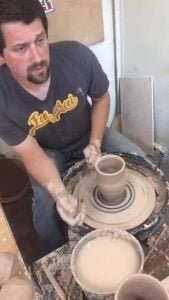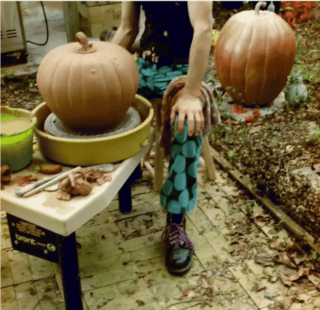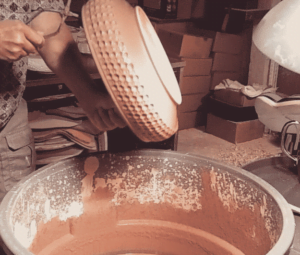Potters use calipers to measure things, usually openings and galleries in lidded forms. Calipers can be very helpful for potters and help get rid of the guesswork. Calipers also have lots of other beneficial uses, and in this article, we will discuss them. We will also discuss the different caliper options, and some suggested places to buy them.
Other Potential Uses for Calipers
1 Making matching forms
Calipers are great for when you want to make exact sets that have specific opening sizes. When you need set circumferences for curves. And when you need other specific details that are important for sets.
One example of this could be making duplicates of cups or mugs that you want to look as similar as possible. Having more than one caliper can be useful if you have more than one area that needs to be measured. Writing down your measurements is also a good way to go about this.
2 Making matching cup and saucers
Another use for calipers is checking the base of a cup to match it with the depression in the center of a saucer plate.
1) Take the measurements of the cups foot when it is still on the wheel. Remember to account for the size difference after you trim it.
2) Use the measurement when you throw your saucer plate. You want to make the depression in the center of the plate the same as your cup.
3 Throwing larger pieces
Are you envious of those potters that can throw very large vessels? Well, don’t worry. For most potters, it is easier to throw a couple of separate sections and then attach them all together. This is easier than throwing one large piece. But it is crucial to get the pieces the right size.
Calipers are very useful for this because the attachment process is like creating a lid. One piece will have to slightly sit inside of another. This method ensures that the two pieces have enough thickness to be attached together and allows the seam between them to be cleaned up easily.
4 Throwing pieces that will fit inside each other
Whether you want to throw a pitcher that will fit inside a basin or a set of bowls that will nest inside of each other; a caliper will be helpful. Without a caliper, it’s more of a guessing game, hoping that they fit compared to knowing that they will fit.
Caliper options
These days, there are a few different materials for calipers. The main material choices for calipers are: metal, wood, or plastic. All these types come in different sizes, with various purposes to suit your potential projects.
Metal Calipers

Metal calipers can be useful for all different studios from schools to small individual studios. They are durable and rust proof, which is nice if they are going to be used a lot and get covered in clay or water frequently. To purchase a set of multiple sizes, click here.
Wood Calipers
Wooden calipers provide a smooth surface and are thicker than other caliper versions. This can be helpful for potters who might have a hard time handling thin calipers. To get a set of three, click here.
Plastic Calipers
Plastic calipers are easy to clean, translucent, and both ends of the caliper are used for measuring. This is handy for making galleries and lids. To purchase a plastic double ended caliper, click here.
Calipers Conclusion
In conclusion, calipers are extremely useful for potters and come in a few different options. Most calipers are inexpensive, and it is easy to add this tool to your collection. If you decide to pick up this handy tool, you can be sure that it will cut down on the guesswork and stress when throwing anything that needs to be precisely measured.




Responses